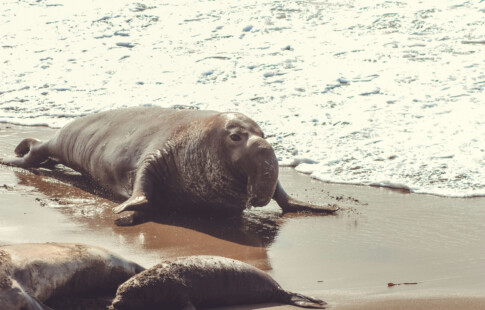
What New Species Have We Discovered in 2018?
We are reader-supported. When you buy through links on our site, we may earn affiliate commission.
Scientists discover new species of plants and animals every year.
The diversity and amount of life on Earth are astounding. Ecologists now estimate there are 8.7 million different species on the planet — and those are the ones we know about — but we discover more each year. Despite the large number of species we are aware of, we are just beginning to discover the extent of life on Earth, and there is so much more to uncover. However, as we enter new species into the record books, we lose others forever because of the destruction of habitats, climate change and illegal hunting.
Finding New Species
The advancement of technology has helped science classify and discover new species. Being able to study and look at DNA has shown how species differ on a molecular level. Communication and cooperation with others around the globe have also contributed to discovering new species. In time, perhaps the advancement of technology will allow us to save or bring back extinct species through cloning — science is certainly working on advancing the technique to make it a possibility!
Commercialization has also contributed to the discovery of new species. With commercial fishing heading into deeper waters for food, they are pulling up aquatic animals that have remained unseen for eons — or perhaps ever.
With the need for crops and livestock to feed hungry populations, farmers and ranchers are cutting down habitats for pastureland and cropland, which displaces animals and brings them out of hiding. While not exactly the most sustainable or environmentally friendly way to discover new species, it still lets us know they exist and gives us the opportunity to find ways to preserve their habitats.
New Species 2018
Every year, scientists identify thousands of new species, with insects being the most common. Even though we are only partway through the year, science has added to the species list. New species 2018 include the following listed below.
Tardigrade
These micro-animals live in mossy habitats all over the world. The newest addition to the family was found in moss growing in a parking lot in Japan. Tardigrades are resilient to extreme heat and cold, and researchers are studying them to understand how extreme conditions impact organisms on a molecular level.
Ocean Dwellers — Fish, Sea Slugs and Sharks
A brown-and-white butterfly fish was discovered 360 feet under the ocean off the coast of the Verde Island Passage in the Philippines. Other fish that have also been identified in 2018 include a catfish discovered in China and 20 reef fish.
Thirteen new species of sea slugs were also discovered, with eight of them being found in the Philippines. What makes these eight slugs special is the ability to swim due to tiny, wing-like structures.
A new six-gilled shard was discovered in the Atlantic Ocean, but it also inhabits the Indian and Pacific oceans. It took analyzing DNA samples from this shark to realize it was a new species of six-gill, bringing our total known variety of this species to three. Most of these sharks live in the extreme depths of the ocean thousands of feet below the surface, so they are difficult to study and discover.
Multitudes of other species live in the depths of the ocean that scientists have only recently discovered, including cookie-cutter sharks with bioluminescence, a cousin to the blobfish and a faceless fish.
Insects
Seven new species of ants have been discovered. A parasitic wasp has also been discovered that comes equipped with saws that allow it to slice its way out of the host body.
Arachnids
Three new species of scorpions that belong to the club-tailed group were identified in the tropical regions of the South, Central and North Americas. This group is unique because it can rub its tail against its body and produce an audible hissing sound, which may be a warning for predators to back off.
Lizards
New lizard species have been discovered in China and Thiruvananthapuram, the largest city in the Indian state of Kerala. The Indian lizard is part of a family that has colorful fans on their throat, and the newest addition was named after Sir David Attenborough, a famous British broadcaster and naturalist.
Plants
Sixteen new flowering plants have been discovered in Brazil and in West Bengal. The plant Lavoisiera canastrensis is critically endangered and can only be found on one mountaintop in the Serra da Canastra National Park.
Year after year, the discovery of new species is exciting and encouraging. Researching and learning more about plants and animals gives us deeper insight into our own lives and a better understanding of the planet we call home.
Despite the number of new species we discover each year, we are losing more at an unprecedented rate — mostly to environmental impacts caused by humans. It’s our responsibility to protect the earth and the creatures living on it so all plants and animals can thrive and survive.
Have your own ideas, comments or questions about conservation or environmental awareness? Contact me so we can work together to make the world a better place to live.
Share on
Like what you read? Join other Environment.co readers!
Get the latest updates on our planet by subscribing to the Environment.co newsletter!
About the author
Jane Marsh
Starting from an early age, Jane Marsh loved all animals and became a budding environmentalist. Now, Jane works as the Editor-in-Chief of Environment.co where she covers topics related to climate policy, renewable energy, the food industry, and more.





